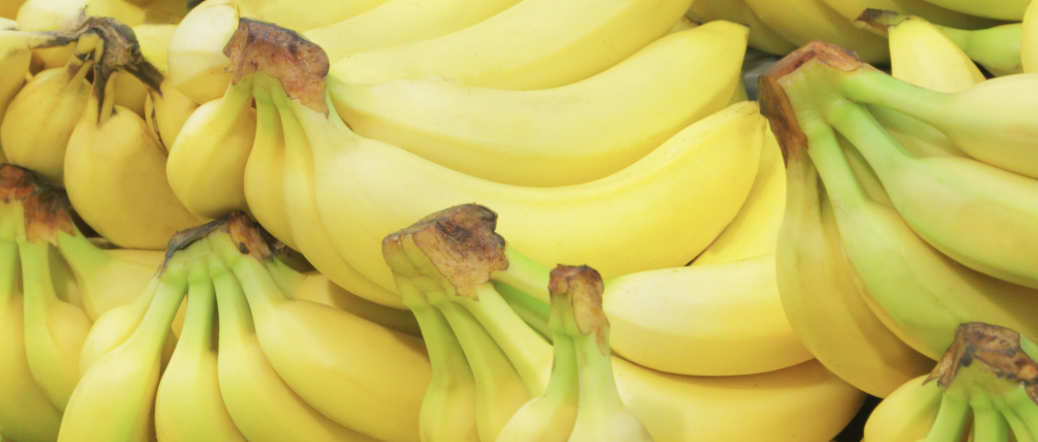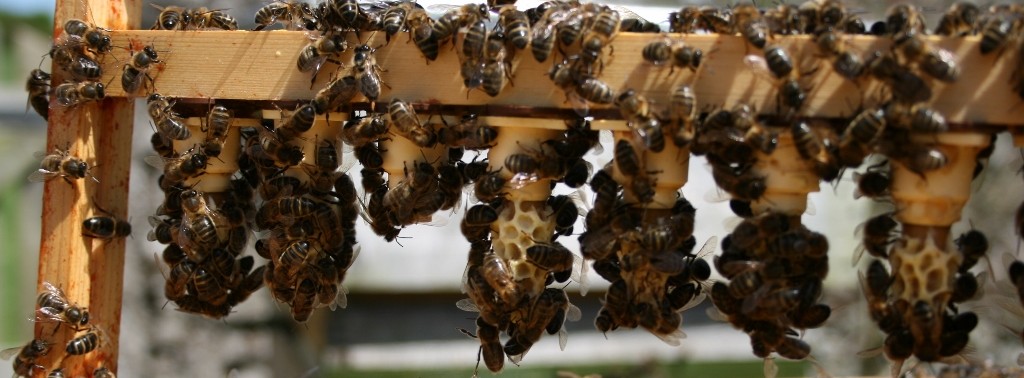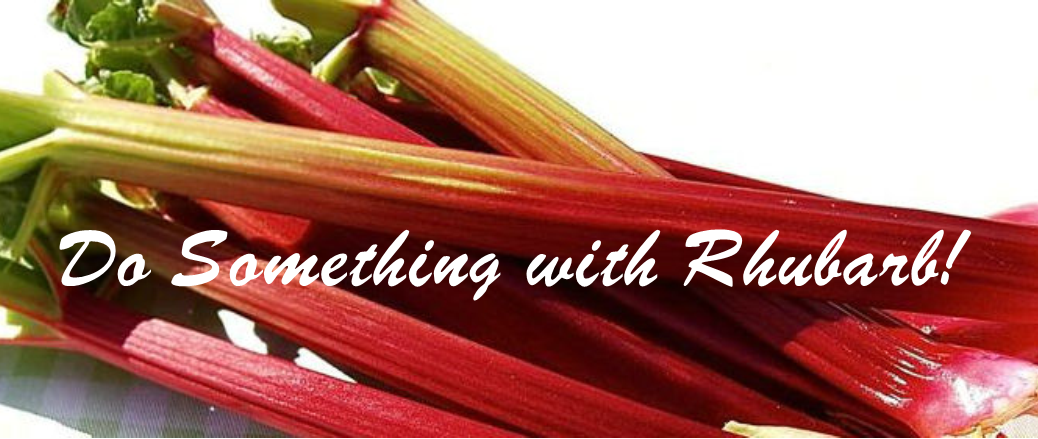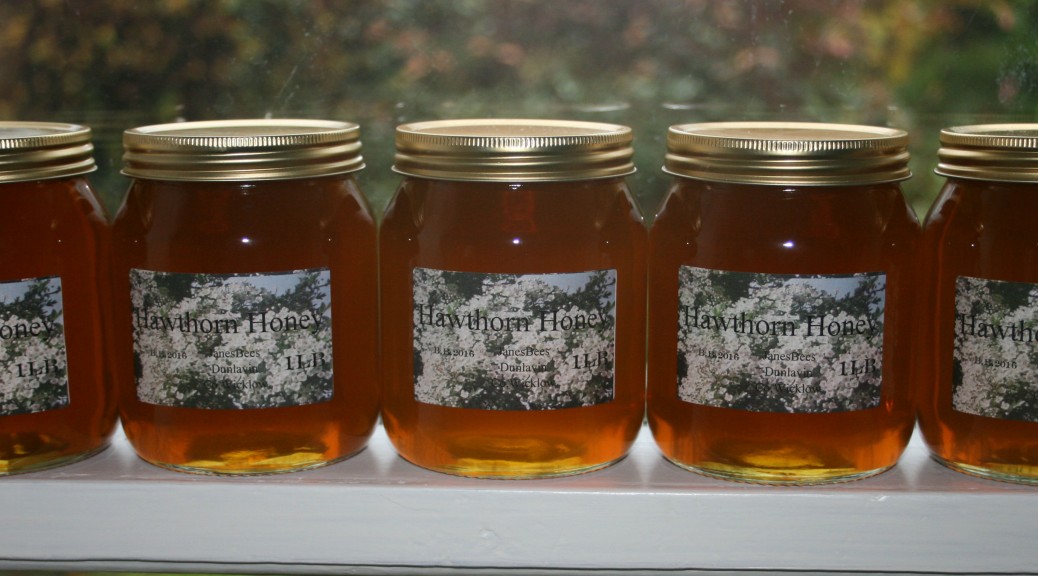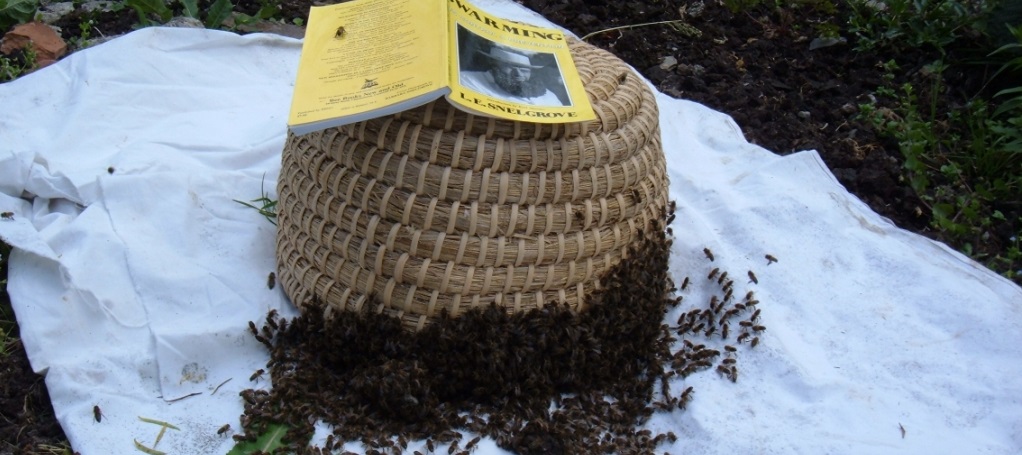So – the banana thing. Here’s what was left after a month, a black and shrivelled thing with a strong smell of propolis. But what are the conclusions if any? Continue reading Chalkbrood Banana Results
Category Archives: Things to do in May
Chalkbrood and the Banana Thing
Have you heard the Banana Thing – the one about the banana in the beehive?
While there is ‘anecdotal evidence’ for bananas as a cure for chalkbrood – it is not scientifically proven.
However, it isn’t scientifically disproven either and there’s no smoke without fire. Read on… Continue reading Chalkbrood and the Banana Thing
Hooper’s Five Questions
Ted Hooper’s five questions – as described in his book ‘Guide to Bees and Honey’ were devised to walk the beekeeper through his or her weekly inspections. The first 5 columns in the Colony Assessment Sheet are there for you record the answers.
Take a look at this frame of bees above – yes there are several things there that should put you on alert!
What you do, or don’t do, in response is the essence of beekeeping. Continue reading Hooper’s Five Questions
How to improve your bees
There are all sorts of bees for sale out there – Buckfast, Carniolan, Italian, Russian, Greek – you name it but how can they possibly be better than the locals on their home turf? Think about it, think about the risks in importing diseases and god knows what-all else. Don’t import bees – improve your own.
Click here for more information on the Native Irish Bee.
Here’s how and it isn’t difficult. In fact it’s fun and very rewarding – you will see real results year on year. We used to have some really horrible bees here and only a few hives of them but each year they would chase us round the garden. Now, in the middle of summer I have around 25 hives of bees here and stings are rare.
So make a start this year. Continue reading How to improve your bees
Honey Bee Colony Assessment
Bee improvement is not difficult – anybody can do it and in fact every beekeeper should do it. The first step is to assess your colonies for a full season and record the data in a Colony Assessment Sheet. It will take a full season because the bees often do not show their true colours till they are big and strong and start to throw their weight about. Once you have the data you can compare colonies systematically and objectively then select stocks for breeding and stocks for culling.
The sheet below has been designed to record both Colony Assessment Data and routine beekeeping information from each visit. Click it for a better view. Scroll down and I’ll walk you through it…
How to unite bees – the Third Box Principle
Rationale
Once upon a time I used to keep mice. They don’t swarm but they are territorial and they do fight. If you try to introduce two mice, of any or either sex, by simply dropping one into the cage of the other they will fight. However, if you put the two of them together in a third cage they will get along like a house on fire. This is what I call ‘the third box principle’ and the same thing applies with bees.
Before we go any further I should state that the Third Box Principle is not an explanation of bee behaviour but it is a mental model which helps the beekeeper to ‘put a handle’ on what is observed. It is also a particularly helpful thing to know when you are in the thick of the latest bee conundrum and wondering what the hell to do next – it can give you extra options.
Here are some useful things to do with it:
Continue reading How to unite bees – the Third Box Principle
Summer Oxalic Acid Varroa Treatment
Oxalic Acid
Oxalic acid is a very effective treatment for Varroa but only during broodless periods when the kill rate can be above 90%. When brood is present the kill rate is closer to 30% as most of the Varroa are in the brood where this acid cannot reach them. Click here for more on oxalic acid.
For this reason oxalic acid tends to be used during the mid-winter broodless period – if there is one!
However, winter is not the only time bees are broodless and oxalic acid can also be used during summer broodless periods when the Varroa are phoretic (out and about on the bees).
Summer Treatment
Imagine a swarm…
Hawthorn Honey
There was a great flow this May (2014) and there is a heavy crop of hawthorn honey on board – a once in 5 year occurrence in these parts. Hawthorn pollen is a pale cream colour but you’ll know if you’ve got hawthorn honey because you will smell it!
Click here for ‘Bee Trees – Hawthorn‘
Here’s a photo of a hawthorn bee with pollen, click it for a better view
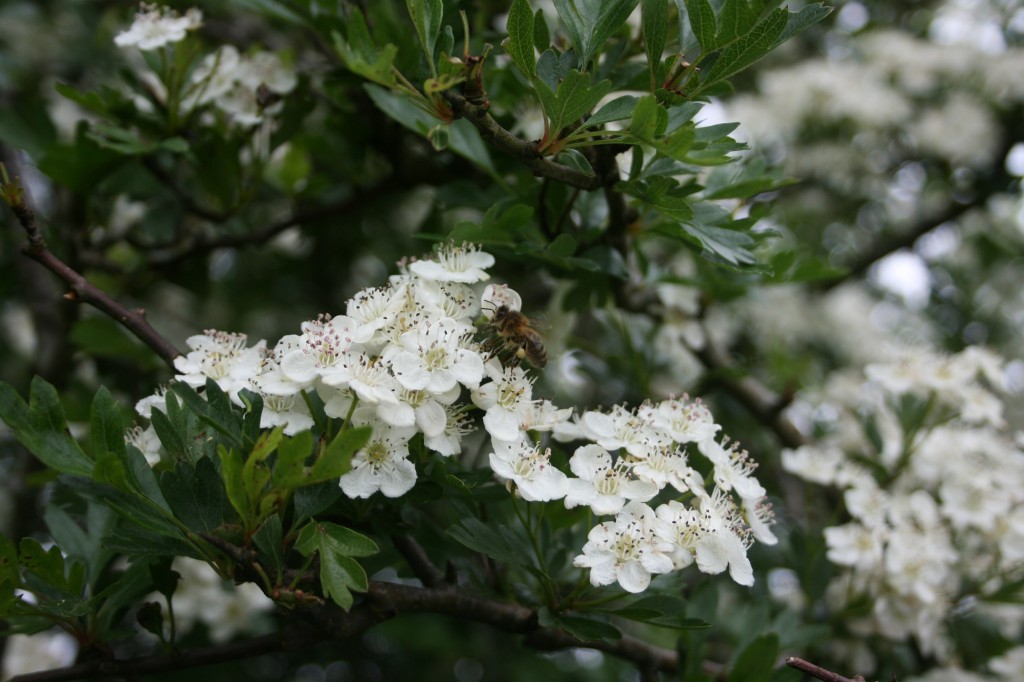 When there is this much honey from an early flow it’s best to take at least some of it off if only to spare the beekeeper’s back. Take only the sealed honey if possible, that way you’ll leave some for the bees in the June gap.
When there is this much honey from an early flow it’s best to take at least some of it off if only to spare the beekeeper’s back. Take only the sealed honey if possible, that way you’ll leave some for the bees in the June gap.
If, however, you suspect there may be rape in amongst it – you have no choice – you will have to take the lot off. If they have no feed below you should rapid feed a gallon or so of strong syrup but take the supers off first or they’ll put it in there.
Alternatively you could place a lump of fondant or better still Ambrosia (special bee fondant made with inverted sugar) over the feed hole. They won’t put this in the supers but if they need it – it’s there and it will also pull the bees straight up in to the supers which might help prevent overcrowding → swarming etc.
Copyright © Beespoke.info, 2014. All Rights Reserved.
Swarming and How to Control it
Swarm control is what you do when swarm prevention didn’t work and you discover larvae in queen cells; if you find eggs in cells it means nothing but once there are larvae you are in trouble! It doesn’t mean you failed by the way – it just means that circumstances have conspired to make the urge to swarm irresistible. Welcome to firefighting!
Swarm Prevention
Swarming is what bees do – if they are healthy they will swarm, so take that on board and you won’t be disappointed.
Swarm prevention is what you do before you find cells with larvae in them. If you find cells with larvae in them – you’re into swarm control. Continue reading Swarm Prevention
